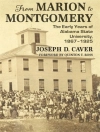The East India Company at Home, 1757-1857 explores how empire in Asia shaped British country houses, their interiors and the lives of their residents. It includes chapters from researchers based in a wide range of settings such as archives and libraries, museums, heritage organisations, the community of family historians and universities. It moves beyond conventional academic narratives and makes an important contribution to ongoing debates around how empire impacted Britain.
The volume focuses on the propertied families of the East India Company at the height of Company rule. From the Battle of Plassey in 1757 to the outbreak of the Indian Uprising in 1857, objects, people and wealth flowed to Britain from Asia. As men in Company service increasingly shifted their activities from trade to military expansion and political administration, a new population of civil servants, army officers, surveyors and surgeons journeyed to India to make their fortunes. These Company men and their families acquired wealth, tastes and identities in India, which travelled home with them to Britain. Their stories, the biographies of their Indian possessions and the narratives of the stately homes in Britain that came to house them, frame our explorations of imperial culture and its British legacies.
Praise for the East India Company at Home, 1757-1857
‘Recommended for many new and interesting insights into a very wide subject.’
Chowkidar
‘By an impressive process of distillation Margot Finn and Kate Smith have put together a coherent survey of the material traces of old India hands – the lucky ones who survived to be repatriated and to make their mark anew in Britain – compiled from a refreshing variety of perspectives’
Journal of the History of Collections
‘This immensely engaging volume… not only contributes to ongoing debates about the place of heritage in modern society and its role in the making of British culture and identity, but also sheds new light on how we package heritage for public consumption, thereby creating new narratives and histories. It showcases public history at its best.’
H-Asia, H-Net Reviews’Invaluable for anyone interested in how the British empire shaped the material culture of British country houses and the families who built, owned and lived in them…’
The Georgian: The Magazine of the Georgian Group
สารบัญ
Introduction
Margot Finn and Kate Smith
Section 1 The social life of things
1. Prize possession: the ‘silver coffer’ of Tipu Sultan and the Fraser family
Sarah Longair and Cam Sharp Jones
2. Chinese wallpaper: from Canton to country house
Helen Clifford
3. Production, purchase, dispossession, recirculation: Anglo-Indian ivory furniture in the British country house
Kate Smith
4. ‘A jaghire without a crime’: the East India Company and the Indian Ocean material world at Osterley, 1700–1800
Yuthika Sharma and Pauline Davies
Section 2 Objects, houses, homes and the construction of identities
5. Manly objects? Gendering armorial porcelain wares
Kate Smith
6. Fanny Parkes (1794–1875): female collecting and curiosity in India and Britain
Joanna Goldsworthy
7. Refashioning house, home and family: Montreal Park, Kent and Touch House, Stirlingshire
Margot Finn and Kate Smith Section
3 The Home Counties: clusters and connections
8. Warfield Park, Berkshire: longing, belonging and the British country house
Kate Smith
9. Englefield House, Berkshire: processes, practices and the making of a Company house
Kate Smith
10. Swallowfield Park, Berkshire: from royalist bastion to empire home
Margot Finn
11. Valentines, the Raymonds and Company material culture
Georgina Green
12. Growing up in a Company town: the East India Company presence in South Hertfordshire
Chris Jeppesen
Section 4 On the borders: region, nation, globe
13. A fairy palace in Devon: Redcliffe Towers, built by Colonel Robert Smith (1787–1873), Bengal Engineers
Diane James
14. Partly after the Chinese manner: ‘Chinese’ staircases in north-west Wales
Rachael Barnwell
15. The intimate trade of Alexander Hall: salmon and slaves in Scotland and Sumatra, c.1745–1765
Ellen Filor
16. Connecting Britain and India: General Patrick Duff and Madeira
Alistair Mutch
Section 5 Company families and identities: writing history today
17. The career of William Gamul Farmer (1746–1797) in India, 1763–1795
Penelope Farmer
18. The Melvill family and India
David Williams
19. The Indian seal of Sir Francis Sykes: a tale of two families
Sir John Sykes
Conclusion
Margot Finn and Kate Smith
เกี่ยวกับผู้แต่ง
Kate Smith is Senior Lecturer in Eighteenth-Century History at the University of Birmingham. Kate specialises in material culture in eighteenth- and nineteenth-century Britain. She published Material Goods, Moving Hands: Perceiving Production in England, 1700-1830 in 2014.












